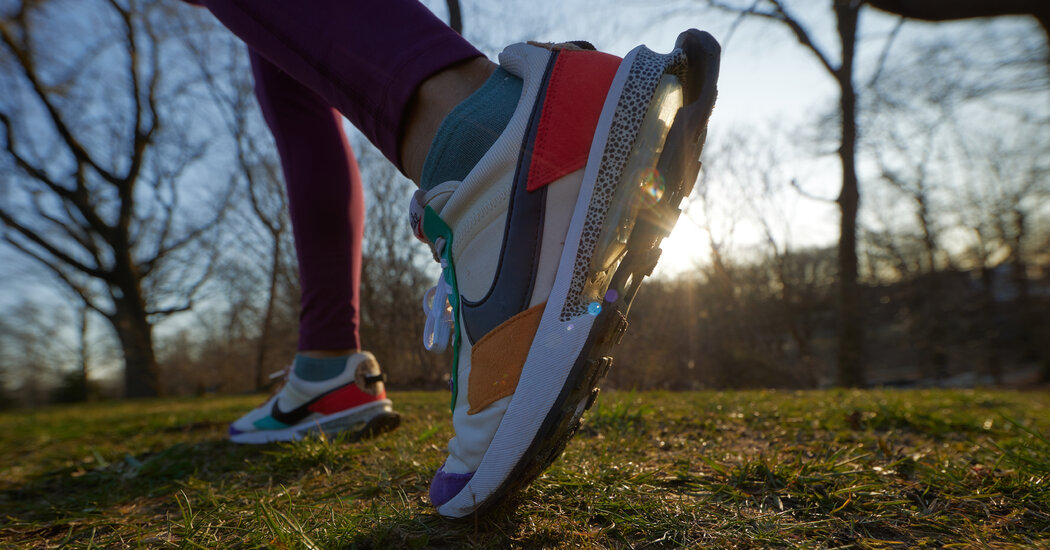We love counting steps. Maybe it’s because we like goals or else the constant reminder on our wrists of how far we’ve gone and need to go to hit a daily target. Or it could also be that study after study says walking is one of the most attainable ways to increase longevity.
So we ask ourselves: How many steps are enough? Are more steps better? A paper published recently in the British Journal of Sports Medicine found that as few as 2,200 steps could help fight diseases exacerbated by a sedentary lifestyle like heart disease and diabetes, though walking up to 9,000 steps was more effective.
But focusing purely on the number of steps misses the whole picture. Researchers now say that after a certain point, what kind of steps you’re taking is just as important as the amount.
So whether you’re hitting that bare minimum target of 2,200 steps or you’re consistently logging 10,000, here are a few tactics to make more of your daily walk.
Begin walking.
The first step for anyone who has fallen out of the habit of walking is to just start, said Amanda Paluch, a kinesiology professor at the University of Massachusetts Amherst. Walk around the block or make loops through your house. See if you can walk 2,000 steps, roughly one mile, then increase from there.
If you’re older or have a chronic condition that makes it harder to get up and move, walking at any speed is helpful for your health, she said.
Walk faster.
It’s often helpful to count your steps at the beginning, but once you consistently reach about 6,000 or 8,000 per day, start focusing more on pace.
Walking causes your muscles to contract, squeezing blood from your legs to your heart, which over time makes your heart stronger and more efficient. But benefits taper off once your heart gets to a certain “stimulus,” said Keith Baar, a professor of molecular exercise physiology at the University of California, Davis, meaning the same number of steps at the same pace each day.
“To have more of an effect,” he said, “you’re going to need a bigger stimulus.”
Push yourself by walking faster and breathing harder, he said. Building intensity into walking isn’t about burning more calories, it’s about strengthening your cardiovascular system. A 2022 paper in the journal Nature showed that walking faster led to lower rates of sleep apnea, acid reflux, diabetes and hypertension.
Begin by walking faster for 30 seconds or one minute at a time. Increase the frequency and length of those bursts as you are able.
Try walking outdoors.
Whether walking outside in itself improves your physical health is still up for debate, according to one 2023 meta-analysis. Dr. Baar, however, argues that we use more energy walking on soft surfaces like sand, gravel or dirt, because our tendons help us walk more efficiently on hard surfaces.
Regardless of whether it’s more difficult, he encourages people to walk on trails because spending time in nature has proven mental health benefits, and because trails tend to have more hills than neighborhood streets.
Walk uphill.
After speeding up, consider heading up. Finding hills to walk up is a good way to boost your fitness in a world where time is limited, said Dr. Sadiya Khan, a cardiologist at Northwestern Medicine and a volunteer for the American Heart Association.
Most studies, including the recent British one, show diminishing returns on step counts over about five miles. So instead of walking 12,000 or 15,000 steps to push your workout, walk uphill to keep your heart rate up. You can also walk uphill backward to make it even harder and target different muscles. The goal is to incorporate vigorous activity into your walking instead of staying at a moderate pace.
Dr. Paluch suggests the singing test: Go hard enough you can speak short sentences but can’t sing a song.
“If you’re comfortably speaking while doing the activities,” said Dr. Khan, “it’s probably a little too leisurely to count as vigorous activity.”
Carry weight.
Consider putting weight in your backpack to boost the intensity of your walk even more. Rucking, as it’s called, helps with strength training while increasing your heart rate, said Dr. Khan.
But Dr. Paluch cautioned anyone interested in rucking to ease into the practice. Weight can cause you to change your gait or how you carry yourself, potentially leading to an injury.
Try jogging.
People often ask Dr. Kahn if it’s better to walk or run around a track. While the distance is technically the same, she said your long-term health will benefit more from running.
Just as when you started walking faster, begin running for 30 seconds or even a minute, then slowly increase those intervals. And whether or not you decide to run, Dr. Khan said, the best kind of daily steps are the ones you will take while working just a little harder.







